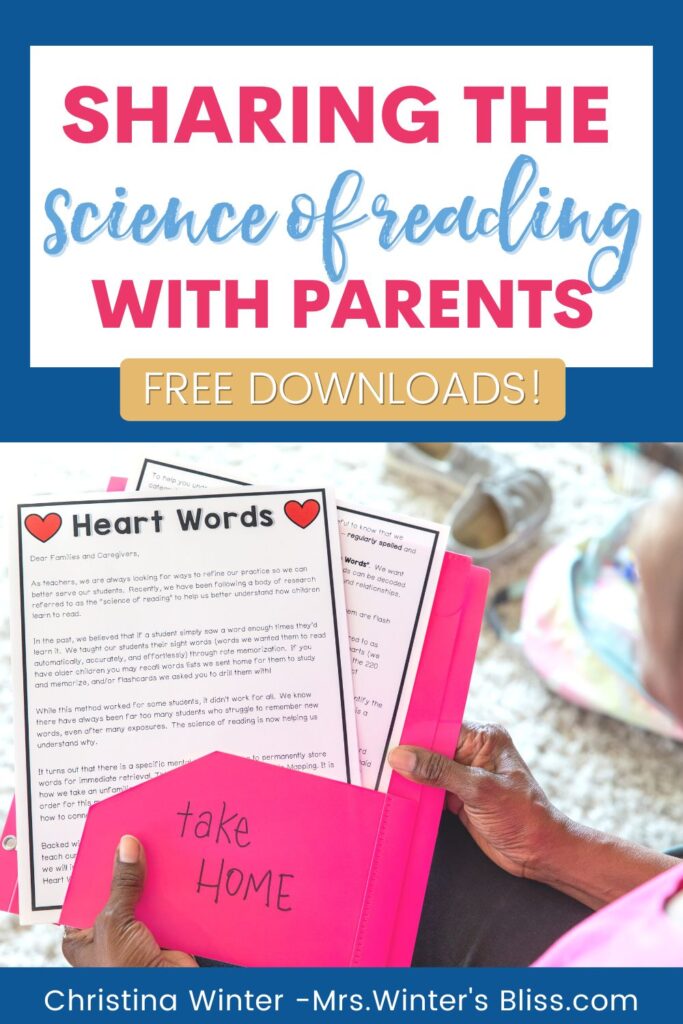
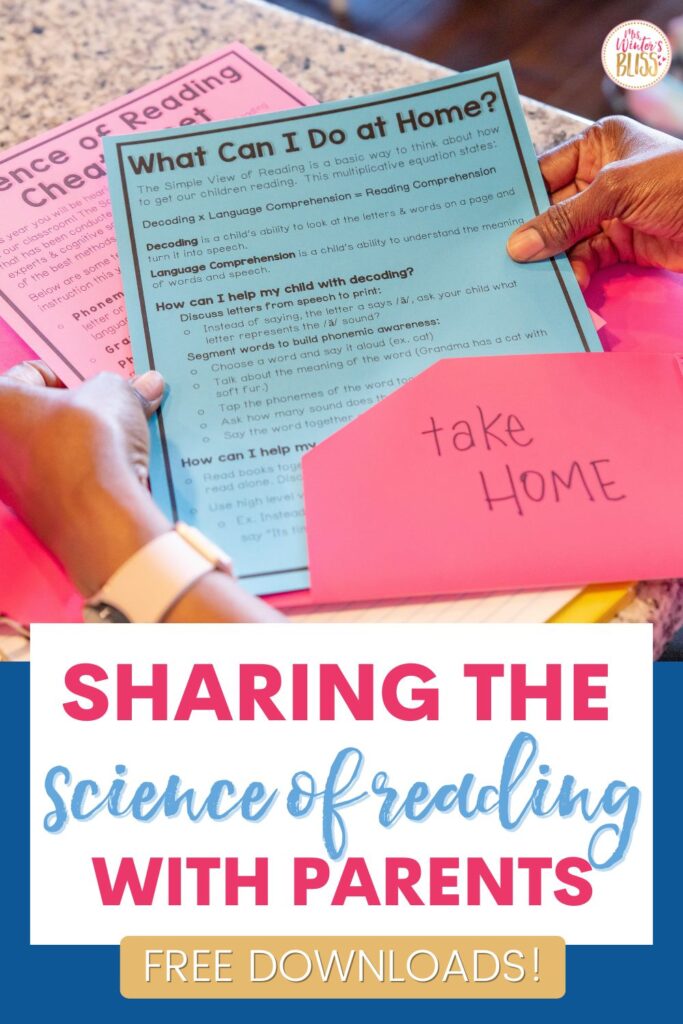
In this blog post, I share handouts, parent letters, and videos about the science of reading that will help families understand how we teach children to read and how they can help at home. These resources and handouts are perfect to share with families at back-to-school nights, parent-teacher conferences, or any time throughout the year!
In classrooms all around the world, we are changing the way we teach our students to read. Backed with knowledge from the science of reading, we are moving away from balanced literacy toward a structured literacy approach. This shift is a wonderful thing for our students, but we can’t do it alone. In order for it to be most successful, we need support from families and caregivers.
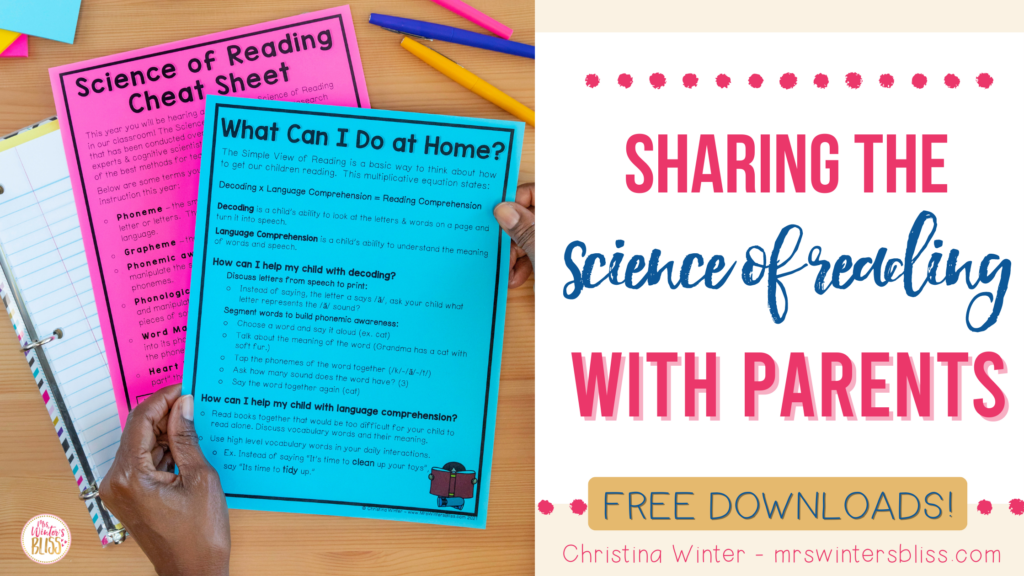
Most families want to help their children learn to read at home. Many just need information on how to effectively do so. To help you out, today I’m sharing handouts, parent letters, and videos about the science of reading that will help families understand how we teach children to read and how they can help at home. These resources and handouts are perfect to share with families at back-to-school nights, parent-teacher conferences, or any time throughout the year!
A Science of Reading Handout for Parents
Most families are happy to help their children at home. Most just need our guidance on what exactly to do. Start by teaching your families a little bit about the science of reading. Explain what it is and how it has changed the way we teach their children. Then offer specific examples of things they can do to help their children learn to read at home.
These free Science of Reading Informational Handouts come as part of my free SoR Toolkit. It is the perfect way to teach families about the science of reading. The handout includes basic information about the science of reading, defines terms we commonly use in reading instruction, and offers specific suggestions for things they can do at home to help children with decoding and language comprehension.
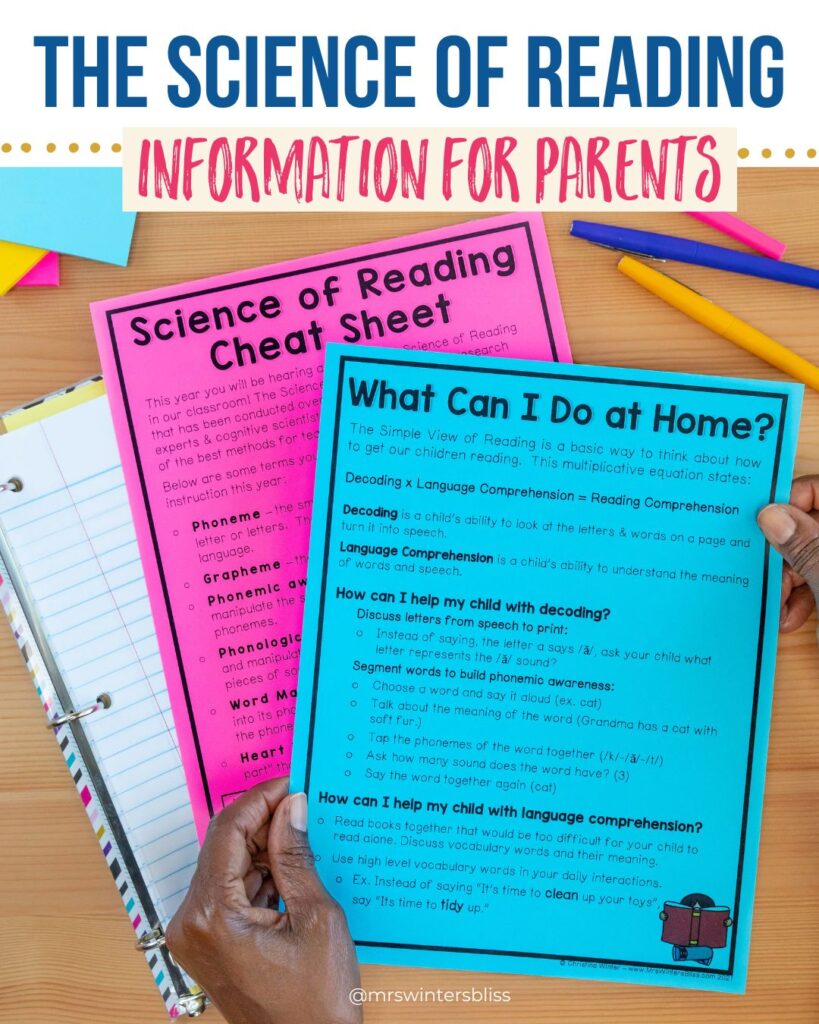
Sign up below to get your own free copy of this “Science of Reading Cheat Sheet” and the “What Can I Do At Home” handouts!
*87% of the time, school spam filters block emails like mine 😩 Please use a personal address to ensure delivery
A Family Letter about Heart Words
We have long known that word recognition is key to reading success. As primary teachers, we have always spent a lot of time helping students learn their sight words.
But for far too long, we taught sight words through rote memorization. We believed that if a student simply saw a word enough times they’d eventually learn it. We now know we were wrong. The science of reading tells us that sight words are not stored in our visual memory. Therefore, we need to integrate sight words into our phonics instruction using the Heart Word Method.
Families are used to seeing word lists and flashcards come home in backpacks. They are accustomed to drilling these words and helping their children memorize them. The Heart Word Method is a move away from that. As teachers, we must help them understand what the Heart Word Method is and why we now know that it is a better way to learn sight words.
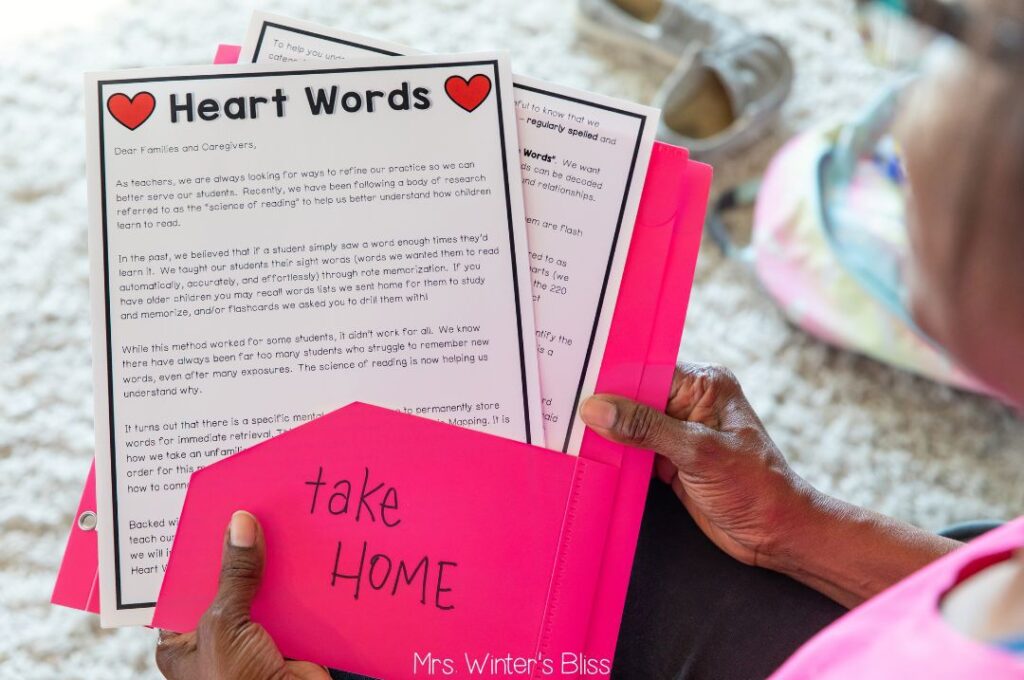
To help families learn about this shift I included an editable family letter about Heart Word Method in the SoR toolkit. The letter explains why we have moved away from rote memorization and helps them understand this newer, more effective method of instruction.
Sign up below to get your own free copy of this FREE editable Heart Word Family Letter!
*87% of the time, school spam filters block emails like mine 😩 Please use a personal address so you don’t miss a thing!
Information for Parents about Spelling and Word Study Instruction
For many years, students received a list of spelling words on Monday, had a few practice activities during the week, and then a spelling test on Friday. As soon as one set of words was assessed, another list took its place. This is what families are accustomed to and probably how they were “taught” to spell when they were young!
Research has shown that this traditional “weekly spelling list/test” is ineffective. There is a better alternative and it is referred to as “word study”. Word study is not based on random memorization of words but rather a systematic approach that provides students practice with word recognition, vocabulary, phonics, AND spelling!
I recognize that this is likely new information for families, so when I created my Weekly Word Study Units for K-3, I included a family letter with each unit. These letters help families understand the shift from spelling to word study, informs them of the focus of the unit, and offers specific ways to support their children at home.
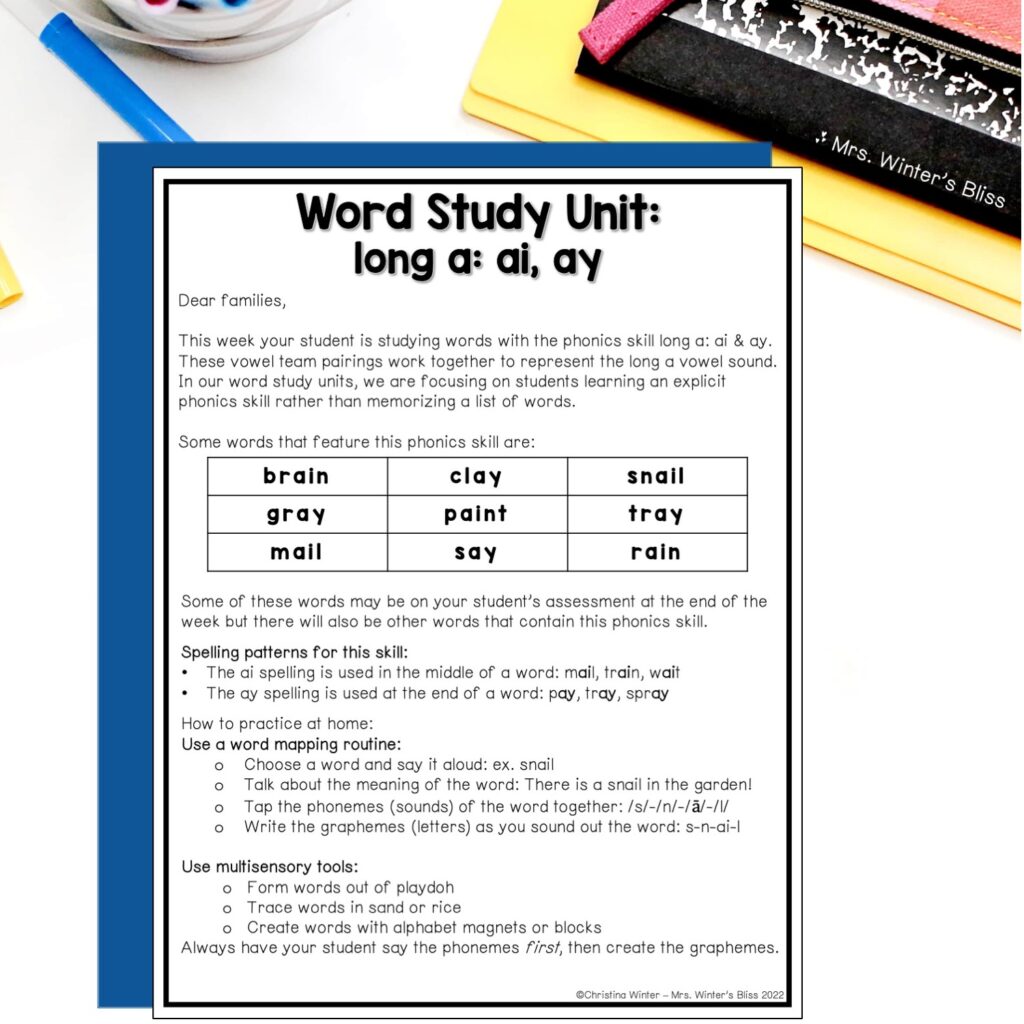
Videos for Parents about the Science of Reading
These videos are quick and easy ways for families to gain more information about the SoR. You could play them on Back-to-School night and/or encourage families to view them at home.
Is My Kid Learning How to Read?
This is an interesting, short 2-part video created by a mom who saw a lot of contradictions between the science of reading and the way her daughter was being taught how to read. She shows what happens when her daughter tries to read a text without the support of pictures, context, or a repetitive sentence pattern.
In Part 2, she gives her daughter direct phonics instruction and decodable texts. She shows us how the phonics lessons help her daughter learn to read. It’s pretty amazing to watch!
Can we Afford to Ignore the Science of Reading?
In this quick, but powerful TedTalk, Heather Hotstetter helps parents understand the difference between balanced literacy and structured literacy. She clearly explains why structured literacy is a more equitable and sound instructional approach for all students.
The majority of parents and caregivers really want to support your work and help their children learn to read. Some just don’t know how to do so. I hope the information and resources I have shared today will make it easy for you to educate your students’ families about the Science of Reading and show them ways they can help support their children’s reading development at home.
–PIN for LATER–










